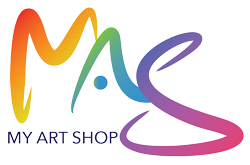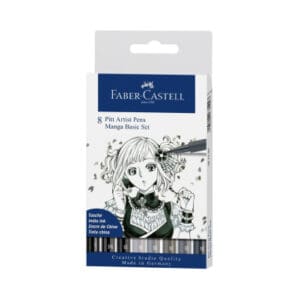
Exploring Stippling Brushes
Understanding Stippling Brush Sizes
Ah, the world of stippling brushes! It’s a magical realm filled with options, ranging from size 0 to size 8 (My Art Shop). It’s like picking the right wand for your wizarding needs—but, you know, with paint. The sizes determine the precision and coverage of your strokes. A smaller brush (size 0-2) is perfect for those meticulous, close-up details that would make even the finest of details jealous. Meanwhile, larger brushes (size 6-8) will have you covering broad areas in no time.
Benefits of Pure Bristle Brushes
Now, let’s talk about the wonders of pure bristle brushes. Imagine a paintbrush that feels like it was crafted by the art gods themselves—well, you’re in luck. Pure bristle brushes are ideal for close-up painting and stenciling tasks (My Art Shop). The bristles are sturdy yet flexible, allowing for a consistent application without leaving unsightly streaks or abrasive marks.
These brushes boast a short, stubby handle, giving you excellent control and precision—perfect for painting trees and foliage. You can practically feel the leaves rustling and the wind blowing through your intricate brushstrokes. Why settle for mediocre when you can have a brush that’s practically shouting “professional artist!”?
Pure bristle brushes deliver a gentle application, reducing abrasion on your canvas. This makes them an excellent choice for techniques that require a delicate touch. Need to paint a smooth sky or layer different textures seamlessly? These brushes have got you covered.
Considering the merits, investing in a pure bristle stippling brush is like buying a golden ticket to the ultimate art show.
Using Stippling Brushes
Discovering the art of stippling brushes can be an enjoyable journey for any creative artist. Let’s dive into some techniques to help bring your artworks to life.

Techniques for Close-Up Painting
Stippling brushes are designed with pure bristle and a short, stubby handle, making them perfect for intricate, close-up painting tasks (My Art Shop). These brushes offer precision and control, allowing artists to create detailed textures and effects with ease. Here’s how to make the most of them:
- Dabbing Method: Lightly dab the tip of the brush onto the canvas to create a stippled effect. Adjust the pressure for varying dot sizes.
- Circular Motion: Use small circular motions for smoother transitions and gradients.
- Layering: Build up layers of stipples for a more textured and realistic look.
Stenciling with Stippling Brushes
Stenciling isn’t just for car mechanics or graffiti artists – it’s a brilliant technique for creating repeating patterns and motifs in your artworks. Stippling brushes are ideal for this due to their stiff bristles and ability to control paint application. Here are the steps:
- Secure the Stencil: Fix the stencil in place on your canvas with masking tape to prevent it from moving.
- Loading the Brush: Dip the stippling brush into the paint, blot excess paint on a paper towel to avoid bleeding under the stencil.
- Stipple Away: Using an up-and-down tapping motion, apply the paint through the stencil, ensuring even coverage.
This technique opens up endless possibilities for creativity, from geometric patterns to intricate designs.
Painting Trees and Foliage
Nature lovers rejoice! Stippling brushes are fantastic for mimicking the complex textures found in trees and foliage. Here’s a simplified method to bring that woodland scene to life:
- Select Your Colours: Choose a mix of greens, browns, and yellows to capture the essence of leaves and bark.
- Stipple to Create Texture: Use a dabbing technique to apply the paint, layering different colours to create depth and realism.
- Focus on Detail: For leaves, use smaller stipples and for the bark, slightly larger and denser stipples.
The versatility of stippling brushes makes them excellent for portraying the intricate details in natural landscapes.
Table of Stippling Brush Uses in Art
| Technique | Method | Ideal For |
|---|---|---|
| Close-Up Painting | Dabbing, Circular Motion, Layering | Intricate textures |
| Stenciling | Tapping Motion through Stencil | Repeating patterns |
| Painting Trees & Foliage | Dabbing, Layering Coloured Stipples | Realistic nature scenes |
Exploring the best stippling brushes can significantly enhance your artistic toolkit. Whether you’re delving into close-up painting, experimenting with stenciling, or capturing the essence of nature, a stippling brush can add a unique touch to your work. For more tips and tricks, check out our articles on drawing techniques, printmaking methods, and collage creation.
Stippling Brushes and Acrylic Medium
When it comes to pairing stippling brushes with acrylic medium, there are several noteworthy considerations. The combination offers artists enhanced control, versatility, and efficiency, making it a top choice among creatives.
Quick Drying Time
One of the standout features of using acrylic medium with stippling brushes is the quick drying time. This characteristic can be a double-edged sword. On one hand, it allows artists to layer colours without long waiting periods. On the other hand, it can make blending a bit of a race against time.
Due to the rapid drying nature, artists find the best stippling brushes ideal for intricate and fast-paced projects. No more waiting around, holding a hairdryer over your canvas!
Versatility and Dilution Options
Stippling brushes, paired with acrylic medium, offer remarkable versatility. Artists can dilute acrylic paints with water or other mediums to achieve varying textures and effects (ATX Fine Arts).
The flexibility to adjust the paint’s consistency makes stippling brushes an artist’s best friend. Whether they want a delicate wash or thick impasto texture, these tools can handle it all. The short, stubby handle of stippling brushes offers excellent control for stenciling and painting fine details like trees and foliage.
Mastering Artistic Techniques
Unleashing your creativity with stippling brushes has never been more exciting. Dive into these artistic techniques to elevate your skill set and produce stunning masterpieces.
Creating Detailed Artworks with Drawing
Drawing is a classic yet captivating technique where artists employ lines, shapes, and values to create intricate and detailed artworks. Techniques like shading, cross-hatching, and stippling with your stippling brush can add depth and texture to your pieces.
| Technique | Description |
|---|---|
| Shading | Gradually changing tones to represent light and shadow |
| Cross-Hatching | Drawing intersecting lines to create texture and shading |
| Stippling | Using tiny dots to create a cohesive image |
Harnessing the Power of Collage
Collage is a versatile medium that allows artists to combine an array of materials such as photographs, magazine cutouts, and fabric to create visually striking compositions. Using stippling brushes in your collage work can add unique textures and patterns that elevate the overall effect of your artwork.
| Collage Element | Description |
|---|---|
| Photographs | Adding personal or historical images for narrative depth |
| Magazine Cutouts | Utilizing vibrant imagery for dynamic results |
| Fabric | Introducing various textures and materials to enhance tactile interest |
The power of collage lies in its ability to mix media and techniques, providing endless possibilities for creative expression.
By mastering these artistic techniques with stippling brushes, artists can create detailed, textured, and visually compelling artworks that capture the imagination and tell a story. Dive into each technique, experiment with different materials, and let your creativity soar!
Selecting the Right Brush
Choosing the right brush can feel like searching for a needle in a haystack, only this particular haystack is jam-packed with bristles, handles, and sometimes even a bit of glitter. When selecting the best stippling brushes, several factors come into play.
Factors Influencing Brush Choice
When it comes to picking out the perfect stippling brush, consider the following factors:
- Hair Type: The brush hair can be either synthetic or natural. This choice largely depends on your personal preference and skin tolerance. Some artists may find natural hair unbearable, while others might not tolerate synthetic fibres.
- Brush Size and Shape: Different sizes and shapes cater to various artistic needs. Some artists prefer smaller brushes for intricate details, while larger ones can cover broader areas more efficiently.
- Handle Design: Ergonomic handles are more than a luxury. They can actually make a difference in the comfort and precision of your painting experience.
Synthetic vs. Natural Hair Brushes
The eternal debate: synthetic or natural hair? While both types have their merits, it ultimately boils down to personal preference and the specific requirements of your art.
Synthetic Brushes
- Pros:
- Tend to be more resilient and durable.
- Great for artists with allergies or sensitive skin, as many natural brushes can be irritating.
- Generally more affordable.
- Cons:
- May not hold paint as well as natural brushes.
- Might lack the finesse and precision that natural brushes offer.
Natural Hair Brushes
- Pros:
- Hold more paint, providing a smoother application.
- Often praised for their softness and fine precision.
- Versatile for both liquid and cream products.
- Cons:
- Can be more expensive.
- Require more care and maintenance.
When choosing the best stippling brushes, artists need to weigh these factors carefully. It might be worth trying out both types to see which one fits your creative needs best.







